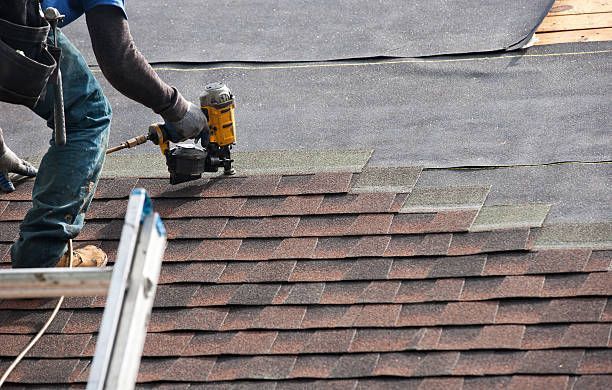Roofing Contractor Checklist: What to Expect During Service
Roofing Contractor Checklist: What to Expect During Service
Hiring a roofing contractor is an important decision for any homeowner or property manager, as it directly affects the safety, durability, and appearance of a property. Knowing what to expect during the service can help ensure a smooth and stress-free experience while protecting your investment. A professional roofing contractor follows a structured process, from initial inspection and assessment to the removal of old materials, installation of new roofing, and final cleanup.
Understanding each step allows homeowners to anticipate timelines, costs, and potential challenges while maintaining confidence in the work being performed. With proper preparation and communication, a roofing contractor can deliver high-quality results that enhance the value and safety of your home. Following a comprehensive checklist ensures that no aspect of the project is overlooked.

Initial Inspection and Assessment
The first step in any roofing project involves a thorough inspection and assessment by the roofing contractor. This process is essential for identifying the current condition of the roof, detecting damage, and determining what materials and tools will be needed for repair or replacement. During the inspection, the contractor examines shingles, flashing, gutters, and other components to uncover issues such as leaks, cracks, or structural weaknesses. Unlike casual observation, professional contractors utilize specialized tools and experience to evaluate the integrity of the roof accurately.
They may also check the attic, roofing vents, and surrounding areas to detect water damage or signs of mold. Once the inspection is complete, the contractor prepares a detailed report outlining the required repairs, estimated timelines, and material recommendations. Homeowners are encouraged to review this report carefully and discuss any concerns with the contractor. A proper assessment ensures that the roofing project is planned efficiently, prevents unexpected costs, and establishes a clear understanding between the homeowner and contractor. This step sets the foundation for a successful roofing project and is a critical component of the overall checklist for quality service.
Preparing the Work Area
Before beginning any roofing work, a professional roofing contractor prepares the work area to ensure safety and efficiency. This includes clearing the surrounding yard, driveway, and walkways of any obstacles that may interfere with the project. Safety equipment, scaffolding, and ladders are set up strategically to allow the contractor to access all parts of the roof without risking accidents. For larger projects, the contractor may install protective coverings over landscaping, vehicles, and outdoor furniture to prevent damage from falling debris. Neighbors and occupants are informed in advance about potential noise, dust, or temporary restricted access areas to maintain transparency and minimize disruptions.
Preparing the work area also involves establishing disposal plans for old roofing materials, ensuring compliance with environmental regulations. A well-prepared site allows the roofing contractor to work efficiently, reduces the risk of accidents, and protects the homeowner’s property. By prioritizing preparation, contractors demonstrate professionalism and establish the groundwork for a seamless roofing experience. This step is a critical part of the checklist for homeowners, ensuring they understand the safety measures and logistics involved before work begins.
Material Delivery and Quality Check
Once the work area is prepared, the roofing contractor coordinates the delivery of roofing materials. This stage is crucial, as the quality of materials directly affects the durability and longevity of the roof. Contractors typically source materials based on the assessment and recommendations agreed upon during the inspection. Upon delivery, the contractor inspects each batch of shingles, underlayment, flashing, and other components to ensure they meet the specified standards and are free from defects. Any substandard or damaged materials are rejected and replaced promptly to prevent future issues.
Additionally, contractors ensure that the materials are stored safely on-site to avoid damage from weather or mishandling. A roofing contractor’s careful management of materials demonstrates professionalism and commitment to quality. Homeowners benefit from this process, as it guarantees that only high-grade, properly inspected materials are used for the project. Material delivery and inspection also help avoid delays, as everything required for the job is on hand and ready for installation. This step emphasizes the importance of planning and preparation in a roofing project, reinforcing the value of hiring an experienced contractor who adheres to best practices.
Roof Removal and Preparation
If the project involves a roof replacement, the roofing contractor begins by carefully removing old shingles, underlayment, and any damaged components. This step is performed with attention to safety, ensuring that debris is contained and disposed of properly. The contractor evaluates the roof deck for structural damage, rot, or mold, making necessary repairs to create a stable foundation for the new roofing. For smaller repairs, damaged shingles or sections may be removed selectively without full replacement. Proper preparation of the roof is essential to prevent leaks, water damage, and premature deterioration.
During this stage, the contractor may install protective barriers and ensure proper ventilation to enhance the performance and longevity of the new roofing system. Homeowners should expect some noise and debris during removal but can rest assured that professional contractors take measures to protect the property and surrounding areas. This step ensures that the roofing installation is built on a secure, well-prepared base, which is critical for overall performance. A roofing contractor checklist should always include roof removal and preparation to guarantee quality and durability in the finished project.
Installing New Roofing Components
After the roof is prepared, the roofing contractor begins the installation of new components, following the manufacturer’s specifications and industry standards. This includes laying underlayment, installing shingles or tiles, securing flashing, and adding ridge caps as required. Precision is crucial to ensure the roof is watertight, structurally sound, and aesthetically appealing. Contractors work systematically from one section to another, using proper techniques to avoid gaps or uneven surfaces. During installation, the contractor monitors for potential issues such as improper alignment, damaged materials, or weak spots.
Safety remains a priority, with team members equipped with harnesses, helmets, and other protective gear. Homeowners may observe the process but should avoid the work area to prevent accidents. Installing new roofing components correctly affects the long-term performance of the roof, reducing maintenance needs and extending its lifespan. This stage also demonstrates the value of hiring a skilled roofing contractor who adheres to best practices. Careful installation ensures the project meets quality standards and homeowner expectations, making it a key step in the roofing contractor checklist.
Inspecting and Securing Roof Features
Once the main roofing installation is complete, the contractor inspects and secures all additional roof features, including vents, chimneys, skylights, and gutters. Proper integration of these elements ensures that the roof functions effectively while preventing water infiltration and structural damage. The contractor checks flashing, seals, and fasteners to guarantee that all features are properly aligned and secure. Roof inspections at this stage are meticulous, as any overlooked detail can lead to leaks or costly repairs. Contractors may also perform minor adjustments to optimize drainage, reduce wind damage, and enhance energy efficiency.
This process highlights the contractor’s attention to detail and commitment to long-term performance. Homeowners should expect the contractor to explain completed tasks and ensure satisfaction before leaving the site. Including inspection and feature securing in the checklist ensures a comprehensive service, giving homeowners confidence that every aspect of the roof has been addressed. Properly completed, this step safeguards the property and supports the durability and functionality of the roofing system.
Cleanup and Debris Removal
A professional roofing contractor ensures that cleanup is completed thoroughly once the installation or repair is finished. This includes removing all debris, old shingles, nails, and construction materials from the property. Contractors may use magnetic sweepers, protective coverings, and disposal services to prevent damage to lawns, landscaping, and vehicles. Thorough cleanup minimizes safety hazards, including the risk of injury from loose nails or sharp debris. Homeowners benefit from a clean and organized property after the project, reflecting the professionalism and attention to detail of the roofing contractor.
The contractor may also inspect the surrounding area to confirm that no damage has occurred during installation. Efficient debris removal and site cleanup demonstrate a commitment to customer satisfaction and a well-executed roofing project. By including cleanup in the roofing contractor checklist, homeowners can expect a smooth transition from construction to daily living, with no residual mess or hazards left behind. Proper post-installation cleanup is a hallmark of professional roofing services, ensuring that the property remains safe, attractive, and fully functional.
Conclusion
A roofing project involves multiple steps, from initial inspection to final cleanup and documentation, making a detailed checklist invaluable for homeowners. By understanding what to expect during service, you can anticipate timelines, costs, and necessary preparations while ensuring a smooth, high-quality experience. Hiring a professional roofing contractor ensures that each stage of the project is handled efficiently, safely, and according to industry standards. For property owners in West Chester, PA, Spring Valley Roofing provides expert services to manage repairs, replacements, and inspections with precision and care. Our team prioritizes quality, safety, and customer satisfaction throughout every project. Contact us today at 1 (610) 827-5666 or visit our office at 2 W Market St, West Chester, PA 19382, United States to schedule your roofing service and experience a professional, seamless roofing process.



